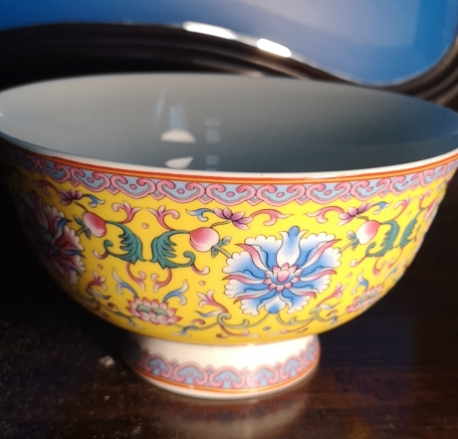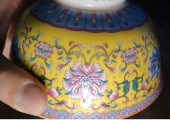大清乾隆年制缠枝花卉纹黄地釉粉彩小碗
- 编 号:806405
- 销售状态:展示 展览中 2022.03.06号后可提货
- 库 存: 1
- 售 价:议价
买家服务热线:
400-601-8111
(平台服务时间:周一到周五 9:00-17:00)

- 资质:
- 评分:
1分 2分 3分 4分 5分 6分 7分 8分 9分 10分 7分
- 印象:
- 经营时间:2023年
- 展厅面积:500平米
- 地 区:上海-静安
作品信息
交易评论
本画廊其他作品
| 创作年代 | 明清 | ||||
|---|---|---|---|---|---|
| 作品分类 | 陶瓷紫砂- 瓷器-清代 | 品种 | 粉彩 | 器型 | 碗 |
| 窑口 | 景德镇窑 | ||||
| 作品标签 | |||||
| 适用空间 | |||||
作品介绍
乾隆时期(1736---1795年)为清代制作的鼎盛期,从乾隆开始,粉彩在彩瓷的领域中几乎完全取代了五彩的地位,成为乾隆彩瓷的主流,官窑和民窑都大量烧造。乾隆与雍正粉彩相比,已由淡雅清丽而变为浓艳豪华。纹饰的风格有两大类:一是继承雍正时期的花卉图(包括过枝花卉)和少量墨彩山水图等,仍保持雅静的风格。另一类则是重色浓彩、锦上添花。乾隆粉彩往往于一件粉彩器上采用压印、剔划、绘画(釉上彩、釉下彩)、开光、色釉、镂空、堆塑、描金等多种装饰技法于一件器物上。“轧道”工艺用得也很多,即在器物局部或全器色地上刻划纤细的花纹,然后加绘各式图案,这种工艺难度大且费工,看上去富丽堂皇,故有“锦上添花”之称。

此藏品为清代乾隆黄地粉彩花卉纹碗,粉彩瓷是珐琅彩之外,清宫廷又一创烧的彩瓷。整体构图得当,绘画精细,颜色艳丽,尽显华丽富贵气度,且品相完好,为乾隆朝官窑器的精品。此碗式样为清代传统官窑。在烧好的胎釉上施含砷物的粉底,涂上颜料后用笔洗开,由于砷的乳蚀作用颜和产生粉化效果。此藏品通体施以黄釉为底,粉彩的描绘,着色技法是比较复杂细致的,一般如画,彩,填,洗,扒,吹,点等技法。其所用工具有画笔,填笔,洗笔,彩笔,笃笔,赤金笔,金水笔,玛瑙笔,扒笔等许多特制笔。明暗清晰,层次分明碗敞口,深腹,圈足,造型厚重端庄,通体粉彩装饰,造型轻盈秀巧,胎质洁白细腻,釉面细润纯净,纹饰和彩丰富艳丽,画面生动逼真,外底署“大清乾隆年制”双行六字楷书款,具有很高历史价值和收藏价值。
中国制瓷业发展到雍正、乾隆时期,粉彩瓷的制作工艺和地位达到了顶峰,备受现代收藏者的推崇,成为拍卖市场上的宠儿。
 英文翻译:
英文翻译:
 This collection is a bowl of yellow pastel porcelain with floral pattern from Qianlong of the Qing Dynasty. Besides enamel porcelain, pastel porcelain was created and burned by the Qing court. The overall composition is proper, the painting is fine, the color is gorgeous, showing the magnificent and rich bearing, and the appearance is intact, which is the exquisite products of the Qianlong imperial kiln wares. The bowl is a traditional imperial kiln in the Qing Dynasty. The powder foundation containing arsenic is applied to the burned glaze, and then washed with a brush after applying the pigment. Because of the emulsion erosion effect of arsenic, the powder effect is produced. The whole body of the collection is painted with yellow glaze and pastel color. The coloring techniques are more complex and detailed. Generally, they are picturesque, colorful, filling, washing, digging, blowing, and other techniques. Its work has a brush, fill pen, wash pen, color pen, brush, red gold pen, gold water pen, agate pen, scratch pen and many other special pen. Light and clear, distinct exposure, deep abdomen, ring foot, modelling respect, heavy full-bodied famille rose decoration and lightsome XiuQiao, modelling TaiZhi, white and smooth glaze renew the purity, grain and color is gorgeous, rich vivid picture, outsole department "qing qianlong year" double row six regular script, has the very high historical value and collection value.
During the period of Yongzheng and Qianlong, the production technology and status of pastel porcelain reached its peak. It was highly praised by modern collectors and became the favorite in the auction market.
This collection is a bowl of yellow pastel porcelain with floral pattern from Qianlong of the Qing Dynasty. Besides enamel porcelain, pastel porcelain was created and burned by the Qing court. The overall composition is proper, the painting is fine, the color is gorgeous, showing the magnificent and rich bearing, and the appearance is intact, which is the exquisite products of the Qianlong imperial kiln wares. The bowl is a traditional imperial kiln in the Qing Dynasty. The powder foundation containing arsenic is applied to the burned glaze, and then washed with a brush after applying the pigment. Because of the emulsion erosion effect of arsenic, the powder effect is produced. The whole body of the collection is painted with yellow glaze and pastel color. The coloring techniques are more complex and detailed. Generally, they are picturesque, colorful, filling, washing, digging, blowing, and other techniques. Its work has a brush, fill pen, wash pen, color pen, brush, red gold pen, gold water pen, agate pen, scratch pen and many other special pen. Light and clear, distinct exposure, deep abdomen, ring foot, modelling respect, heavy full-bodied famille rose decoration and lightsome XiuQiao, modelling TaiZhi, white and smooth glaze renew the purity, grain and color is gorgeous, rich vivid picture, outsole department "qing qianlong year" double row six regular script, has the very high historical value and collection value.
During the period of Yongzheng and Qianlong, the production technology and status of pastel porcelain reached its peak. It was highly praised by modern collectors and became the favorite in the auction market.

 王兆奎
王兆奎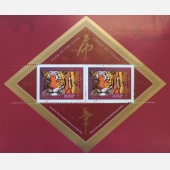 加拿大资深
加拿大资深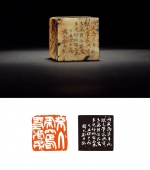 韩天衡
韩天衡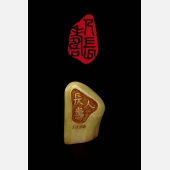 陈维廉
陈维廉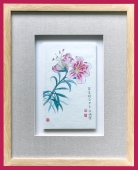 赵映璧
赵映璧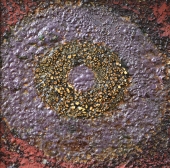 魏新
魏新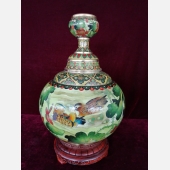 米振雄
米振雄 康蕾
康蕾